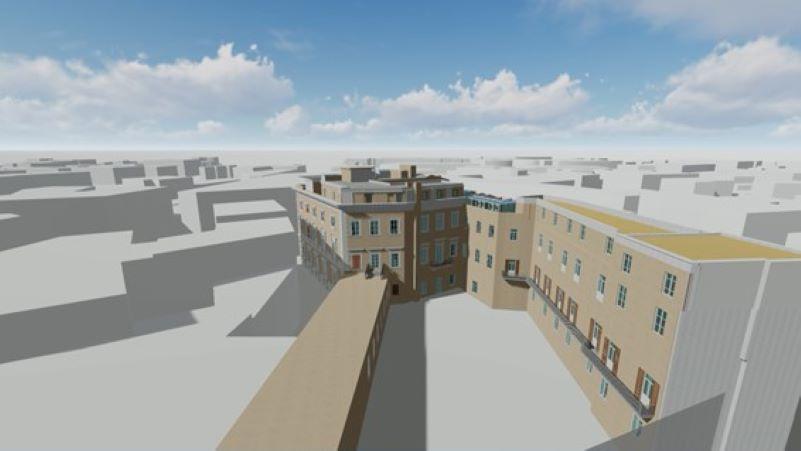BEEP models a historic Italian palace using Building Information Modelling (BIM) methodology

In this video we show you the "Palazzo Mafei Borghese" modelled with BIM technology. This ancient palace, located in Italy, is one of the 9 pilot buildings of the BEEP project in which an innovative methodology is proposed to plan an energy efficient renovation, without undermining the heritage value of these buildings.
The use of BIM technology is becoming more and more common in new buildings, but it is still rarely used in old buildings, especially when they are historic or have a high heritage value.
However, H-BIM (Historic BIM) technology makes it possible to define the overall geometry of the building (exterior and interior walls, floors, roofs) and its main components (e.g. windows, doors, moldings). Particular attention has been given to the representation of the decorative elements and exterior moldings, which constitute a fundamental part of the historical architecture.
Such particular and specific old elements are not included in the standard libraries offered by BIM and must therefore be designed for the occasion, which means more time and dedication. However, the result is worth it, as having a 3D building defined exhaustively will allow a much more accurate energy analysis and therefore, much more energy efficient renovations.
Once the BIM model is completed, an energy analysis phase will be initiated using other calculation tools. It is therefore important to keep in mind that the more well-defined the BIM model is, the more accurate the energy analysis will be.
About the BEEP project:
BEEP project aims at strengthening the use of Building Information Modelling (BIM) to enhance energy efficiency in buildings. The testing of this emerging technology on built heritage will be performed to demonstrate its scalability to the entire building stock. The project will provide public administrations with a powerful method for the energy rehabilitation of public buildings to be supported with private funds through the Energy Performance Contracting (*). The project main outcome will be an innovative methodology based on the integration of emerging technologies tested on 9 heritage public buildings located in Italy, Spain, Cyprus, Jordan, Palestine, Lebanon, and Egypt.
(*) Energy performance contracting (EPC) is a mechanism for organising the energy efficiency financing. The EPC involves an Energy Service Company (ESCO) which provides various services, such as finances and guaranteed energy savings. The remuneration of the ESCO depends on the achievement of the guaranteed savings. The ESCO stays involved in the measurement and verification process for the energy savings in the repayment period. ESCO and energy performance contracting are mostly found in the public sector and to a lesser extent in the industrial and commercial building sectors (Hilke and Ryan, 2012). Source: European Comission
Follow BEEP project: Web, Facebook, Twitter









